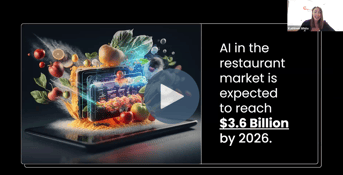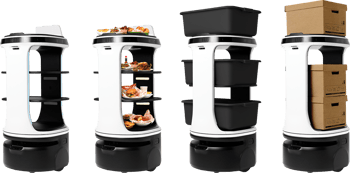After years of building and running venture capital backed tech companies, John Meyer found himself entering a new industry – the restaurant industry. In 2021, he opened his first concept. And within 60 days, he was turning a profit, despite having zero former professional food experience.
“I’d been following this ghost kitchen industry for about four or five years, and I was interested because it felt like for the first time in human history, it’s reasonably attainable for almost any American to start a restaurant,” says Meyer, who’s Keto Kitchen passed the one-year mark in March. “What used to cost potentially a million dollars and an entire year to start, you can now get up and running in 30 days with about $30,000.”
Meyer runs Keto Kitchen out of a CloudKitchens facility in Austin, Texas. He’s also the CEO of Ghost Financial, a company that offers financial products like insurance, payroll, credit cards, and expansion loans to ghost kitchen operators. And recently he launched GhostU, a Masterclass-style online learning program designed to teach people how to build and run a successful ghost kitchen.
“What really led to GhostU was feeling grateful by our Keto Kitchen success but also feeling sad by seeing occasional scenarios of failure in my own ghost kitchen facility,” says Meyer. “The goal is to give any foodie with a dream an end-to-end educational resource on how to do this successfully and to bring down the failure rate to 5% or less.”
The 12-part video series costs $1,000. This also gains customers access to a web-based community platform, where ghost kitchen operators share experiences and exchange ideas through message-board-style communication.
Based on his Keto Kitchen experience, we asked Meyer to share what he sees as the top keys for building a successful ghost kitchen operation. You’ll find all of these ideas expanded upon in GhostU, but below is a primer on what to consider before starting your own virtual restaurant.
Top 3 Steps for Creating a Successful Ghost Kitchen
Build a passionate fan base before launching using targeted ads
With a ghost kitchen, you’re hidden. There is no brick and mortar that serves as a public-facing advertisement. And that makes it crucial to introduce your concept to your target audience prior to launch time.
“We spent almost a whole quarter – from early November up until we opened in January – building a community, and so when we opened, we got many orders on that very first day,” says Meyer. “We did this largely through targeted advertising using the Facebook ad platform, which allows you to target people in your geographical region that are interested in your brand. For us, that was the Keto market, the low-carb, trying to be healthy lifestyle crowd in Austin.”
Building hype will bring sales from day one. Then, with a solid product, in the weeks that proceed you’ll be able to exponentially grow as your initial following begins to share their experience with others.
Of course, it’s important to continue to target your audience with updates and new photos. Staying top of mind is pivotal in a competitive space, especially when operating an entirely digital brand.
Optimize menu item names and photos
When crafting the menu, it’s time to get creative – or hire someone who can do it for you. Clever names and vibrant photos are essential for catching new customers when they’re rapidly scrolling through food delivery apps like Uber Eats in search of dinner.
“Think about a menu item from the standpoint of what could provide a wow factor and an eye-popping effect,” says Meyer. “The Keto customer base of ours loves bacon, so one example of what we did is we introduced an item called ‘legendary side of bacon’. It’s a whole to-go box of bacon, and quite an expensive side – a little over $10 – but it’s ordered all the time.”
Even if you’re selling a fairly classic item, consider what embellishments, toppings, or sides you can add to create that “wow” factor, and think carefully about how you market it in the name. Then, unless you have exceptional photo skills, invest in a professional photographer who can bring the dish to life. Again, the goal here is to stand-out among a sea of competition, often giving your mere seconds to capture people’s attention before they scroll on.
Always negotiate ghost kitchen lease terms
Shop around before signing with a ghost kitchen facility, and take your time to thoroughly review each lease to see where there might be wiggle room.
“I think nine out of 10 prospective ghost kitchen operators don’t realize they can negotiate lease terms for preferable rent, preferable cost of utilities, and lower cost of deposit,” says Meyer. “These little differences can make a huge difference in your ability to be profitable because restaurants’ margins are already so slim.”
After looking at the major players, like CloudKitchens and Kitchen United, see if there are other lower cost alternatives in your desired location. “In some cases, [independent facilities] are more flexible and even offer hour-by-hour rentals rather than full, year-long leases,” says Meyer.





